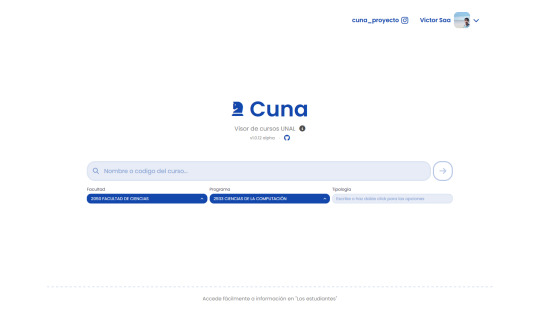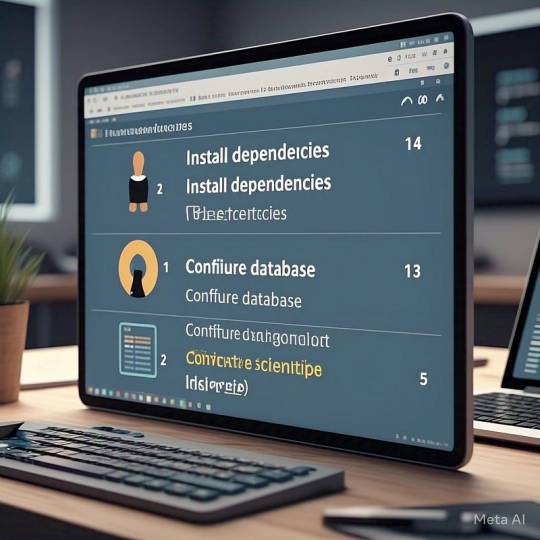#vue firebase
Explore tagged Tumblr posts
Text

Cuna, una herramienta para que los estudiantes de la UNAL estén al tanto de los cupos de sus asignaturas durante el periodo de matricula de una forma cómoda y eficiente.
Cuna es un proyecto de mi autoria y de codigo abierto. Por detras hace uso de Nuxt3 y Firebase con Cloud functions.
Source
0 notes
Text
Web Development Company in Hosur – Hosur Softwares | Custom Websites that Convert
Searching for a reliable web development company in Hosur to build your online presence? Hosur Softwares is a leading tech company based in Hosur, Tamil Nadu, offering high-quality, responsive, and SEO-ready websites tailored to meet your business goals.

Whether you're a local startup, SME, or enterprise, we help you stand out online with powerful websites that attract, engage, and convert visitors.
Custom Website Design
We don’t use one-size-fits-all templates. Our team designs custom websites that reflect your brand identity and speak directly to your target audience.
Responsive Web Development
Your website will look and perform perfectly on all screen sizes—desktops, tablets, and mobiles—with responsive coding and intuitive navigation.
E-Commerce Website Solutions
Ready to sell online? We build scalable, secure, and user-friendly eCommerce websites with payment gateways, inventory tools, and order tracking.
Fast Loading & SEO-Optimized
All our websites are optimized for speed, performance, and search engines—giving you a head start in Google rankings and user experience.
CMS & Admin Control
We offer content management systems (CMS) like WordPress, Laravel, or custom-built panels so you can update your site anytime without technical help.
Secure & Scalable Infrastructure
Our websites are built with security-first architecture, including SSL, encrypted data handling, and scalable hosting environments.
Technologies We Use
Frontend: HTML5, CSS3, JavaScript, React, Vue
Backend: PHP, Laravel, Node.js, Python
CMS: WordPress, Joomla, Custom CMS
Database: MySQL, Firebase, MongoDB
Why Choose Hosur Softwares?
Local team with global standards
Transparent pricing & timely delivery
100% mobile-friendly and SEO-ready sites
Maintenance & post-launch support included
Trusted by 100+ satisfied clients in Hosur and beyond
🔗 Get started today at: https://hosursoftwares.com Discover why we're a top-rated web development company in Hosur trusted by local businesses and global clients alike.
#WebDevelopmentHosur#HosurWebDesign#WebDevelopmentCompany#HosurBusiness#CustomWebSolutions#WebsiteDesignHosur#ITCompanyHosur#HosurTech#ResponsiveWebDesign#EcommerceWebsiteHosur#DigitalHosur#HosurStartups#WebExpertsHosur#SEOReadyWebsite#HosurSoftwareCompany
0 notes
Text
Full Stack Development: Bridging Frontend and Backend in Modern Web Applications
As technology evolves and businesses seek faster, more efficient ways to build digital products, full stack development has emerged as a critical skill in the tech industry. It combines both the frontend (what users see) and backend (what powers the system) to create complete, end-to-end web applications.
In this article, we’ll explore what full stack development is, its key technologies, benefits, career prospects, and how it powers the modern digital landscape.
What is Full Stack Development?
Full stack development refers to the process of developing both the client-side (frontend) and server-side (backend) of a web application. A full stack developer is someone proficient in both areas, capable of handling everything from designing user interfaces to managing databases and servers.
Key Areas of Full Stack Development:
Frontend (Client-Side)
Focuses on user experience and interface design.
Technologies: HTML, CSS, JavaScript, React, Angular, Vue.js
Backend (Server-Side)
Handles application logic, database operations, and server configuration.
Technologies: Node.js, Python, Java, PHP, Ruby; with frameworks like Express, Django, Spring Boot
Database Management
Stores, retrieves, and manages data for the application.
Technologies: MySQL, PostgreSQL, MongoDB, Firebase
Version Control & Deployment
Manages code collaboration and application deployment.
Tools: Git, GitHub, Docker, CI/CD, cloud platforms (AWS, Heroku, Vercel)
Popular Full Stack Tech Stacks
MERN Stack
MongoDB, Express.js, React, Node.js
JavaScript-based stack ideal for dynamic web applications
MEAN Stack
MongoDB, Express.js, Angular, Node.js
Great for enterprise-level apps
LAMP Stack
Linux, Apache, MySQL, PHP
A traditional and powerful stack for dynamic websites
Django + React
Python-based backend (Django) with React frontend
Secure and scalable
Why Full Stack Development Matters
Versatility
Full stack developers can work on multiple layers of an application, making them highly adaptable and valuable in teams.
Efficiency
They can understand and manage an entire project, reducing the need for extensive handovers between frontend and backend teams.
Faster Prototyping
One person can take a project from idea to deployment, making it ideal for startups and MVP development.
High Demand & Career Growth
Full stack developers are in high demand across tech industries, with diverse job opportunities and competitive salaries.
Skills Required for Full Stack Development
Frontend: HTML, CSS, JavaScript, responsive design, frameworks like React or Vue
Backend: API development, database integration, server-side logic
Database Management: CRUD operations, schema design
DevOps Basics: Deployment, testing, CI/CD, Git
Soft Skills: Problem-solving, collaboration, time management
Career Opportunities in Full Stack Development
Popular job roles include:
Full Stack Developer
Software Engineer
Web Developer
Technical Lead
Application Architect
Average Salary (US):Entry-Level: $65,000 – $85,000 Mid-Level: $90,000 – $120,000 Senior-Level: $120,000 – $150,000+
Challenges of Full Stack Development
Steep Learning Curve: Requires continuous learning in multiple technologies.
Time Management: Balancing both frontend and backend responsibilities can be challenging.
Rapid Tech Evolution: Frameworks and tools change frequently, requiring adaptability.
How to Start a Career in Full Stack Development
Master the Basics – Learn HTML, CSS, and JavaScript.
Pick a Stack – Choose MERN, LAMP, or another stack to specialize in.
Build Projects – Create real-world applications like blogs, e-commerce stores, or social platforms.
Use Git & GitHub – Practice version control and collaboration.
Learn Deployment – Use Heroku, Vercel, or AWS to host your applications.
Stay Updated – Follow tech blogs, take online courses, and engage with developer communities.
Conclusion
Full stack development is at the intersection of creativity and logic — allowing developers to build complete, functional, and scalable web applications. As the demand for all-in-one tech professionals continues to grow, becoming a full stack developer is both a valuable skill and a rewarding career path.
Whether you’re just starting out in tech or looking to level up your development skills, full stack development offers endless possibilities and a front-row seat to shaping the future of the web.
Location : https://g.co/kgs/H5YVuuF
0 notes
Text
The Evolution of the Full Stack Web Developer: Then vs. Now
Technology is moving at lightning speed, and so are the people who build it. One such pivotal role in the digital space is that of the full stack developer—a professional who juggles both the front-end and back-end of web applications. But like all things in tech, the role of the full stack developer has undergone massive transformation over the past two decades.
So, how did we get from the simple websites of the early 2000s to today’s complex, cloud-integrated, API-driven web apps? Let’s walk through the evolution of the full stack web developer: then vs. now.
Back Then: Simpler Times, Simpler Stacks
In the early days of the internet, being a full stack developer meant you were a jack-of-all-trades—but the stack was far less complicated. Websites were relatively static, and the tools were limited but manageable.
What defined a full stack developer then?
HTML, CSS, and a bit of JavaScript: These were the core technologies for building any web interface.
Backend scripting with PHP or ASP.NET: Most developers used server-side languages like PHP for form processing and basic database interactions.
Databases like MySQL: Relational databases were the go-to for storing content.
Little to no version control: Most code was shared via ZIP files or FTP uploads.
Solo development: Often, a single developer managed the entire website—from writing HTML to setting up servers.
This era was defined by simplicity, but also by limitations. Sites were slower, less interactive, and rarely mobile-friendly. Yet, in those early days, one developer could manage it all.
Now: Complexity, Collaboration, and Constant Learning
Fast forward to today, and the web is a different beast. Users expect speed, responsiveness, personalized experiences, and seamless integration with other apps. To meet these expectations, the full stack developer has had to evolve dramatically.
What does a full stack developer look like now?
Front-End Frameworks: React, Angular, or Vue are commonly used for building dynamic user interfaces.
Back-End Powerhouses: Node.js, Django, Ruby on Rails, or even serverless functions on AWS or Azure.
Cloud & DevOps: Modern full stack developers often deploy on cloud platforms and manage CI/CD pipelines.
APIs and Microservices: Today’s applications are modular, and developers must work with RESTful APIs and sometimes GraphQL.
Database Variety: From SQL to NoSQL (MongoDB, Firebase), data storage is more versatile.
Version Control and Collaboration Tools: Git, GitHub, GitLab, and platforms like Jira and Slack are essential.
Security & Performance: Awareness of cross-site scripting, data encryption, and performance optimization is critical.
Modern full stack developers don’t just write code—they’re architects, problem-solvers, and collaborators.
The Human Side of the Evolution
Let’s not forget the human element. Twenty years ago, being a full stack developer often meant learning by doing. There were fewer formal resources, and “Googling it” wasn’t even a thing. Now, developers have access to endless online courses, forums, and bootcamps—but they also face constant pressure to keep up.
Challenges modern full stack developers face:
Burnout from constant learning
Juggling too many technologies
Unclear job definitions in some companies
Need to balance depth vs. breadth of skills
However, despite the complexity, today’s developers are part of a global community. They share code, contribute to open source, and support one another. That’s something that has only grown stronger over time.
The Stack Is Evolving—And So Is the Developer
The definition of a full stack developer continues to shift. Some developers specialize more in either front-end or back-end, while still understanding both. Others become tech leads, DevOps engineers, or product-focused developers. But at its core, the role is about versatility and adaptability.
Key skills of a modern full stack developer:
Proficiency in multiple languages and frameworks
Problem-solving mindset
Understanding of UI/UX principles
Ability to work with databases, APIs, and cloud infrastructure
Strong communication and teamwork skills
Conclusion: From Hackers to Architects
The journey from the humble beginnings of web development to today’s sophisticated tech stacks is a fascinating one. The full stack developer of the past may have worked alone, but the modern developer thrives in collaboration, supported by tools, teams, and an ever-growing tech ecosystem.
The evolution of the full stack web developer: then vs. now reminds us that while tools and technologies will continue to change, the heart of development—curiosity, creativity, and code—remains the same.
0 notes
Text
Choosing the Right Tech Stack for Your SaaS Startup in 2025

Launching a SaaS startup in 2025 presents incredible opportunities—but also steep competition and technical complexity. At the core of every successful SaaS product lies one critical decision: choosing the right tech stack. This choice directly impacts your application's scalability, performance, development speed, and long-term maintainability. As innovation accelerates and user expectations grow, aligning with the right tools and technologies becomes even more crucial. That's why leading SaaS software development companies are focusing on modern, flexible, and efficient stacks to help startups future-proof their products.
In this blog, we’ll break down what a tech stack is, key considerations for making the right choice in 2025, and which stacks are trending. Whether you're bootstrapping or seeking funding, understanding your tech foundation is essential for long-term success.
What Is a Tech Stack?
A tech stack refers to the set of technologies used to build and run a software application. It typically includes:
Frontend technologies: What users interact with (e.g., React, Vue, Angular)
Backend technologies: Handles logic, database operations, and APIs (e.g., Node.js, Django, Ruby on Rails)
Database systems: Where data is stored and managed (e.g., PostgreSQL, MongoDB, MySQL)
DevOps tools: For deployment, monitoring, and scaling (e.g., Docker, Kubernetes, Jenkins)
Your stack choices affect everything from development speed to product performance and even your team's ability to scale quickly.
Key Factors to Consider When Choosing a SaaS Tech Stack
Choosing a tech stack isn’t just a matter of picking popular frameworks. It requires a strategic approach that factors in both your short-term goals and long-term product roadmap.
1. Scalability
Can your stack handle increased load as your user base grows? Scalability must be baked in from the beginning. Cloud-native stacks and microservices architecture are popular choices in 2025 for their ability to scale horizontally with ease.
2. Time to Market
Speed is everything for SaaS startups. Tech stacks with extensive libraries, rich documentation, and large developer communities (like JavaScript frameworks or Python-based platforms) enable faster MVP development and iteration.
3. Developer Availability
Choosing niche languages or frameworks may limit your hiring pool. Opt for technologies with a large, active community to make future hiring and team expansion easier.
4. Security
Security is non-negotiable in SaaS. Your stack should support encryption, secure APIs, and compliance with standards like GDPR, HIPAA, or SOC 2—depending on your target market.
5. Cost
The total cost of ownership includes not only development but also hosting, scaling, and maintenance. Some platforms (e.g., Firebase) offer great starter plans, but may become expensive at scale. Use tools like a SaaS cost calculator to estimate long-term infrastructure and development costs.
Popular Tech Stacks for SaaS Startups in 2025
Here's a breakdown of some modern stacks popular among high-performing SaaS startups in 2025:
1. MERN Stack (MongoDB, Express, React, Node.js)
Strengths: Full JavaScript stack, large community, great for real-time apps
Best for: Single-page applications, fast MVPs
2. Jamstack (JavaScript, APIs, Markup)
Strengths: Fast, secure, and SEO-friendly
Best for: Static sites, headless CMS, marketing-heavy SaaS platforms
3. Serverless Architecture (AWS Lambda, Azure Functions, Google Cloud Functions)
Strengths: Minimal server management, pay-per-use
Best for: Startups focused on reducing infrastructure costs and scaling automatically
4. Python + Django + PostgreSQL
Strengths: Quick prototyping, clean code, robust ORM
Best for: SaaS tools needing strong data integrity, admin dashboards
5. Go (Golang) + React + Kubernetes
Strengths: High performance, great concurrency, scalable microservices
Best for: SaaS platforms with high-performance requirements or complex workflows
Need Expert Help Choosing Your Tech Stack?
👉 Book an Appointment Get tailored advice from our SaaS tech architects. Whether you're starting from scratch or revamping your current product, we can help align your business goals with the most efficient stack.
Mistakes to Avoid When Choosing Your Tech Stack
❌ Over-Engineering the MVP
It’s tempting to build for scale from day one, but doing so can delay your time to market. Focus on the fastest path to MVP with scalability in mind—but don’t overcomplicate.
❌ Following Hype, Not Need
Just because a new framework is trending doesn’t mean it’s right for your product. Assess each tool’s pros and cons in the context of your specific needs.
❌ Ignoring Team Expertise
Your current team's skills are a major asset. Choosing a stack outside their expertise can result in delays, bugs, and unnecessary training costs.
The Role of SaaS Software Development Companies
Choosing your stack is just the beginning. The real value lies in how efficiently you can execute your product vision using those technologies. SaaS software development companies specialize in helping startups navigate the tech landscape by:
Offering experienced developers familiar with modern SaaS architecture
Providing strategic consulting for scalability, security, and integrations
Accelerating MVP launches with tried-and-tested frameworks
Delivering full-cycle development from ideation to post-launch support
In 2025, agility and technological precision are the keys to success in the SaaS world. By partnering with the right development team and selecting a well-aligned tech stack, you can focus on what matters most—solving real problems for your users.
Final Thoughts
Your tech stack will shape the trajectory of your SaaS startup. It affects how fast you ship features, how your app performs under load, and how easily you can scale your team and product. Don’t rush the decision. Take a holistic view—factor in development speed, security, hiring flexibility, and long-term cost implications.
Whether you choose the classic MERN stack or go serverless with cutting-edge tools, what matters most is making an informed, forward-looking decision. With guidance from experienced partners and a clear vision of your product roadmap, you can confidently set your SaaS business up for long-term success.
To do it right, consider working with top-tier SaaS software development firms that not only understand code but also the business logic behind building scalable, resilient, and profitable SaaS platforms.
0 notes
Text
Back-End Development: A Complete Guide for Beginners in 2025

When you visit a website, everything you see—the layout, colors, text, and buttons—is the front end. But what happens when you log in, fill out a form, or make a payment? That’s where the back-end development magic begins.
In this complete guide, we’ll explore what back-end development is, why it’s crucial for the web, what technologies and skills you need, and how you can build a thriving career in this dynamic field. Whether you're a curious beginner or someone switching careers, this article has everything you need to know.
🚀 What is Back-End Development?
Back-end development refers to the server-side part of web development. It's everything that happens behind the scenes to make a website or app function properly—like servers, databases, application logic, and APIs.
Back-end development is all about how a website works rather than how it looks.
For example:
When you submit a login form, the back end checks your credentials in the database.
When you place an order online, the back end processes the order and stores the transaction.
⚙️ How Does Back-End Development Work?
The back end interacts with three key components:
Server – The machine that handles requests.
Database – Where data like user info and product listings are stored.
Application – The logic that ties it all together.
Here’s a simplified flow:
User clicks a button (front-end)
Front-end sends a request to the server
Back-end processes the request
Data is fetched from or saved to the database
Server sends a response back to the front-end
🧰 Core Technologies in Back-End Development
To become a back-end developer, you’ll need to learn these foundational tools and languages:
1. Programming Languages
LanguageUse CaseJavaScript (Node.js)Scalable server-side appsPythonFast prototyping, AI, APIsPHPWordPress and server scriptingRubyElegant, readable server-side codeJavaEnterprise-grade backend systemsC# (.NET)Enterprise, Windows-based applications
2. Databases
TypeExamplesRelationalMySQL, PostgreSQL, MS SQL ServerNoSQLMongoDB, CouchDB, Firebase
3. Frameworks
LanguageFrameworksJavaScriptExpress.js, Nest.jsPythonDjango, FlaskPHPLaravelRubyRuby on Rails
🌐 Back-End vs Front-End Development
FeatureFront-EndBack-EndFocusUser interface (UI/UX)Server logic and databaseLanguagesHTML, CSS, JSJS (Node), Python, PHP, JavaRuns OnBrowserServerPrimary ConcernDesign, interactivityLogic, data management, securityPopular ToolsReact, Vue, BootstrapDjango, Express.js, PostgreSQL
🧑💻 Roles & Responsibilities of a Back-End Developer
What does a back-end developer do?
Build APIs and server-side logic
Design and maintain databases
Secure user data and handle authentication
Ensure scalability and performance
Collaborate with front-end developers and DevOps teams
🛡️ Back-End and Security
Security is a core responsibility in back-end development.
Key areas include:
Data encryption
Secure APIs
Password hashing (bcrypt, Argon2)
Input validation
Authorization & Authentication (OAuth, JWT, etc.)
🧱 APIs and RESTful Architecture
APIs (Application Programming Interfaces) are bridges between the front end and back end.
Back-end developers often design:
REST APIs using HTTP methods (GET, POST, PUT, DELETE)
GraphQL APIs for flexible data querying
WebSockets for real-time communication
🔗 Database Management and ORM
Databases are the heart of any application.
Back-end developers use SQL for structured queries and ORMs (Object Relational Mappers) like:
Sequelize (Node.js)
Prisma
SQLAlchemy (Python)
Eloquent (Laravel)
📦 Hosting and Deployment
Once the server code is ready, it needs to be hosted.
Popular options:
Cloud: AWS, Google Cloud, Azure
Containers: Docker, Kubernetes
Serverless: Vercel, Netlify, AWS Lambda
CI/CD pipelines like GitHub Actions, Jenkins, and GitLab CI automate deployments.
🧠 Learning Path: How to Become a Back-End Developer
Here’s a structured roadmap:
Master a Programming Language – Start with Python or JavaScript (Node.js)
Understand the Internet and HTTP
Learn Databases – Start with MySQL or MongoDB
Build REST APIs
Practice Authentication & Security
Work with Real Projects
Use Git and GitHub
Explore DevOps Basics
Build a Portfolio with back-end apps
Contribute to Open Source
📊 Salary Insights and Job Opportunities (2025)
Back-end development is one of the most in-demand tech skills in 2025.CountryEntry-LevelMid-LevelSeniorIndia₹5–8 LPA₹10–20 LPA₹25+ LPAUSA$65K–$85K$90K–$120K$130K+UK£30K–£50K£55K–£75K��80K+
Common Job Titles:
Back-End Developer
Full-Stack Developer
API Engineer
Server-Side Developer
Cloud Functions Developer
💬 Real Developer Reviews
⭐⭐⭐⭐⭐ “As a back-end developer, I love building things people don’t even realize they’re using. It’s like being a wizard behind the curtain.” — Neha R., Software Engineer
⭐⭐⭐⭐☆ “Python and Django made it easy to get started. The logic is so clean and powerful.” — Mike T., Backend Developer
⭐⭐⭐⭐⭐ “Every startup needs someone who can build scalable back ends. It’s a career with massive growth potential.” — Ritika D., API Architect
🧠 Best Learning Resources (Free & Paid)
Free Platforms:
freeCodeCamp
MDN Web Docs
The Odin Project
Paid Options:
Udemy
"Node.js: The Complete Guide"
"Python & Django Bootcamp"
Coursera
"Back-End Development by Meta"
edX
Scrimba
📌 FAQs About Back-End Development
Q1. Do I need a degree to become a back-end developer?
A: No. Many successful developers are self-taught. Bootcamps and real-world projects matter more than degrees.
Q2. Which is better: back-end or front-end?
A: It depends on your interests. If you enjoy logic, data, and server operations—back-end is for you.
Q3. Is Node.js good for back-end?
A: Yes. Node.js is fast, efficient, and widely used for scalable server-side applications.
Q4. How long does it take to become job-ready?
A: With consistent learning, you can become a back-end developer in 6–12 months.
Q5. What is full-stack development?
A: Full-stack developers handle both front-end and back-end tasks. They’re skilled in end-to-end development.
Q6. What are the best languages for back-end development?
A: Python, JavaScript (Node.js), PHP, Java, and C# are top choices in 2025.
✨ Final Thoughts: Is Back-End Development Right for You?
If you love building logic, handling real-world data, working with APIs, and ensuring applications run smoothly—back-end development might be your ideal career path.
It’s a high-demand, well-paying, and technically rewarding field with endless opportunities for growth, especially with cloud computing, AI, and big data booming.
Whether you dream of joining a tech giant or launching your own SaaS app, mastering back-end development opens the door to some of the most impactful tech roles of the future.
0 notes
Text
website devloper
A website developer is a professional who builds and maintains websites. They ensure websites are functional, user-friendly, and optimized for performance. There are three main types of web developers:
1. Front-End Developer
✅ Works on the visual part of the website (what users see). ✅ Uses HTML, CSS, JavaScript and frameworks like React, Vue, or Angular. ✅ Focuses on responsive design, animations, and user experience (UX/UI).
2. Back-End Developer
✅ Handles the server-side logic and database of a website. ✅ Works with Node.js, PHP, Python, Ruby, or Java to manage data and processing. ✅ Uses databases like MySQL, PostgreSQL, and MongoDB to store and retrieve data.
3. Full-Stack Developer
✅ Can do both front-end and back-end development. ✅ Builds complete web applications, from UI to database management. ✅ Knows both front-end and back-end technologies, making them highly versatile.
Skills Required to Become a Website Developer
🔹 Programming Languages: HTML, CSS, JavaScript 🔹 Frameworks & Libraries: React, Angular, Vue, Bootstrap 🔹 Backend Technologies: Node.js, PHP, Python, Laravel 🔹 Databases: MySQL, MongoDB, Firebase 🔹 Version Control: Git, GitHub 🔹 Web Hosting & Deployment: Netlify, Vercel, AWS
0 notes
Text
Sidequests
I'd like to get my phone's music folder fixed. Right now it has a lot of Christmas music - Well, I say "right now" but it has for years.
I'd also like to get caught up with OCRemix. The trouble is that I don't know which song I stopped on before. Part of me just wants to go from current and go both forward and backward and have the "go backward" part include an extra step where I check whether the song is already in my playlist. Seems reasonable.
We're also up to Fudgemas. I have supplies for six batches, and I'm thinking to skip the "plain" considering how little extra work it takes to get a lil something extra in there. Probably peanut butter x2, walnut x2, spicy pecan (cinnamon and cayenne), and peppermint. We're far enough from major holidays to make the postal trip easy but it's still cool enough that I won't be so worried about my gifts melting on the way to my friends and family.
Oh right! I was also going to start documenting alphabet soup / mad lib job qualification boosters and figure out which of them can be learned quickly. A few to get started, from today's job hunt:
PostgreSQL
React.js
Next.js
Django
Flask
Vue
Angular
MongoDB
Firebase
GraphQL
RESTful APIs
Docker
Kubernetes
Selenium
Cypress
AWS
GCP
Azure
0 notes
Text
IONIC DEVELOPMENT SERVICES: BUILD YOUR NEXT-GEN APP TODAY
Introduction to Ionic Development Services
Businesses today need seamless mobile experiences. Ionic, an open-source UI toolkit, helps build high-performance hybrid apps using HTML, CSS, and JavaScript. With its cross-platform capabilities, it’s a cost-effective and efficient solution for modern app development.
Understanding Ionic Framework

What is Ionic?
Ionic is a cross-platform framework that enables developers to build mobile applications using web technologies. It provides a library of pre-built UI components and tools that create native-like experiences with a single codebase.
Key Features of Ionic
Cross-Platform Development — Write once, run anywhere.
Rich UI Components — Pre-designed UI elements for stunning apps.
Supports Angular, React & Vue — Flexible for developers.
Capacitor & Cordova Plugins — Access native device features.
PWA Support — Build web-based mobile apps with offline capabilities.
Open-Source Community — Large, active developer base.
Benefits of Ionic Development Services

1. Cost-Effective Solution
Develop once and deploy on iOS and Android, reducing costs and effort.
2. Faster Development
Pre-built components and reusable code accelerate development time.
3. Native-Like Performance
Plugins and APIs ensure a smooth user experience across devices.
4. Third-Party Integrations
Easily integrate Firebase, Google Maps, and payment gateways.
5. Large Developer Community
An active community provides resources, support, and improvements.
Use Cases of Ionic Development

1. E-Commerce Apps That Drive Sales
Seamless shopping experiences with real-time updates and secure payments.
2. Healthcare & Fitness Apps That Transform Lives
Ionic powers telemedicine, fitness tracking, and health monitoring applications.
3. Educational Platforms That Engage Learners
Create interactive e-learning apps with video streaming and quizzes.
4. On-Demand Service Apps That Deliver Convenience
Food delivery, ride-sharing, and logistics apps benefit from Ionic’s efficiency.
5. Enterprise Applications That Boost Productivity
Build HR, CRM, and ERP solutions for large organizations.
Unlock more details by clicking here
Best Practices for Ionic Development

1. Optimize Performance for Speed and Efficiency
Use lazy loading for faster startup.
Minimize unnecessary DOM manipulations.
Optimize images and media.
2. Use Capacitor Plugins for Better Functionality
Capacitor offers better performance than Cordova.
3. Ensure Responsive Design for All Devices
Leverage CSS Grid and Flexbox for cross-device adaptability.
4. Enable Offline Mode for Uninterrupted Access
Use Service Workers and local storage for a smooth user experience.
5. Implement Strong Security Measures to Protect Data
JWT authentication for secure logins.
SSL/TLS encryption to protect data.
Choosing the Right Ionic Development Company
Find Experts Who Deliver Results — Check past projects and expertise.
Read Reviews from Satisfied Clients — Look for positive testimonials.
Ensure Technical Mastery in Ionic & Beyond — Angular, React, and Vue proficiency.
Select a Partner for Ongoing Support — Post-development maintenance is key.
Future of Ionic Development

With advancements in Capacitor, WebAssembly, and Progressive Web Apps, Ionic continues to evolve. Businesses seeking cost-effective, high-performance apps will find Ionic a valuable solution for years to come.
Ionic
Ionic Framework
Ionic App Development
Mobile App Development
Cross Platform
0 notes
Text
How to Deploy Your Full Stack Application: A Beginner’s Guide

Deploying a full stack application involves setting up your frontend, backend, and database on a live server so users can access it over the internet. This guide covers deployment strategies, hosting services, and best practices.
1. Choosing a Deployment Platform
Popular options include:
Cloud Platforms: AWS, Google Cloud, Azure
PaaS Providers: Heroku, Vercel, Netlify
Containerized Deployment: Docker, Kubernetes
Traditional Hosting: VPS (DigitalOcean, Linode)
2. Deploying the Backend
Option 1: Deploy with a Cloud Server (e.g., AWS EC2, DigitalOcean)
Set Up a Virtual Machine (VM)
bash
ssh user@your-server-ip
Install Dependencies
Node.js (sudo apt install nodejs npm)
Python (sudo apt install python3-pip)
Database (MySQL, PostgreSQL, MongoDB)
Run the Server
bash
nohup node server.js & # For Node.js apps gunicorn app:app --daemon # For Python Flask/Django apps
Option 2: Serverless Deployment (AWS Lambda, Firebase Functions)
Pros: No server maintenance, auto-scaling
Cons: Limited control over infrastructure
3. Deploying the Frontend
Option 1: Static Site Hosting (Vercel, Netlify, GitHub Pages)
Push Code to GitHub
Connect GitHub Repo to Netlify/Vercel
Set Build Command (e.g., npm run build)
Deploy and Get Live URL
Option 2: Deploy with Nginx on a Cloud Server
Install Nginx
bash
sudo apt install nginx
Configure Nginx for React/Vue/Angular
nginx
server { listen 80; root /var/www/html; index index.html; location / { try_files $uri /index.html; } }
Restart Nginx
bash
sudo systemctl restart nginx
4. Connecting Frontend and Backend
Use CORS middleware to allow cross-origin requests
Set up reverse proxy with Nginx
Secure API with authentication tokens (JWT, OAuth)
5. Database Setup
Cloud Databases: AWS RDS, Firebase, MongoDB Atlas
Self-Hosted Databases: PostgreSQL, MySQL on a VPS
bash# Example: Run PostgreSQL on DigitalOcean sudo apt install postgresql sudo systemctl start postgresql
6. Security & Optimization
✅ SSL Certificate: Secure site with HTTPS (Let’s Encrypt) ✅ Load Balancing: Use AWS ALB, Nginx reverse proxy ✅ Scaling: Auto-scale with Kubernetes or cloud functions ✅ Logging & Monitoring: Use Datadog, New Relic, AWS CloudWatch
7. CI/CD for Automated Deployment
GitHub Actions: Automate builds and deployment
Jenkins/GitLab CI/CD: Custom pipelines for complex deployments
Docker & Kubernetes: Containerized deployment for scalability
Final Thoughts
Deploying a full stack app requires setting up hosting, configuring the backend, deploying the frontend, and securing the application.
Cloud platforms like AWS, Heroku, and Vercel simplify the process, while advanced setups use Kubernetes and Docker for scalability.
WEBSITE: https://www.ficusoft.in/full-stack-developer-course-in-chennai/
0 notes
Text
Real-Time COLLATE Chat with Vue and Firebase
Introduction Real-Time COLLATE Chat with Vue and Firebase is a powerful combination that enables real-time communication and text editing between users. In this comprehensive tutorial, we will explore the concept, implementation, and optimization of a real-time COLLABORATE chat application using Vue.js and Firebase Realtime Database. This tutorial is designed for intermediate to advanced…
0 notes
Text
The Future of Full-Stack Web Development: Trends, Tools, and Technologies to Watch
In the ever-evolving world of tech, few areas have seen as much rapid growth and transformation as full stack web development. What used to be a clear separation between frontend and backend has now turned into a more seamless, hybrid model, where developers are expected to juggle both ends of the spectrum. But where is this all heading?
As we look into the future of full-stack web development, it's clear that exciting changes are on the horizon — from smarter tools and frameworks to revolutionary technologies that promise to redefine how we build for the web. If you're a developer, student, or tech enthusiast, it's time to pay attention.
What is Full Stack Web Development?
Before diving into future trends, let’s briefly revisit what full stack web development really means. A full stack developer works on both:
Frontend (client-side): Everything users interact with — HTML, CSS, JavaScript, and UI frameworks like React or Vue.js.
Backend (server-side): Databases, servers, APIs, and the business logic behind the scenes using technologies like Node.js, Python, Ruby, or Java.
A full stack developer is essentially a digital Swiss Army knife — versatile, adaptable, and always in demand.
Emerging Trends in Full Stack Web Development
Here’s what’s shaping the future:
1. The Rise of Jamstack
Jamstack (JavaScript, APIs, and Markup) is becoming the preferred architecture for faster, more secure, and scalable web applications. Unlike traditional stacks, Jamstack decouples the frontend from the backend, improving performance and simplifying development.
2. AI-Powered Development Tools
Artificial Intelligence is now making its way into code editors and development platforms. Think GitHub Copilot or ChatGPT. These tools assist in writing code, identifying bugs, and even generating entire functions — speeding up the full stack workflow.
Benefits:
Faster coding with AI suggestions
Error prediction and debugging assistance
Smart documentation generation
3. Serverless and Edge Computing
Forget managing traditional servers — serverless architectures and edge computing are becoming the new standard. They allow developers to deploy applications with minimal infrastructure concerns, focusing purely on code and performance.
4. Component-Based Development
Modern frontend frameworks like React, Angular, and Vue are pushing developers towards building reusable components. This modular approach is now extending into the backend too, creating consistent development patterns across the stack.
Tools to Watch in Full Stack Development
To stay relevant, developers must keep their toolkits updated. Here are some must-watch tools shaping the future:
Frontend Tools
React (with Next.js) – For server-side rendering and static generation
Svelte – Lightweight and highly efficient for reactive apps
Tailwind CSS – Utility-first CSS framework for rapid UI development
Backend Tools
Node.js – Continues to dominate with asynchronous performance
Deno – A secure runtime from Node.js’s creator
GraphQL – Replacing REST APIs with a more flexible query language
DevOps & Hosting
Vercel & Netlify – Leading platforms for seamless frontend deployment
Docker & Kubernetes – For containerization and orchestration
Firebase & Supabase – Backend-as-a-service options for fast prototyping
Key Technologies Shaping the Future
Let’s look at the bigger innovations redefining full stack web development:
WebAssembly (WASM): Bringing languages like C++ and Rust to the web browser
Progressive Web Apps (PWAs): Combining web and native app experiences
Blockchain Integration: Decentralized apps (dApps) and smart contract backends
Real-Time Web with WebSockets & MQTT: Enabling live updates and chats
The Human Side of Full Stack Development
Beyond the code and tools, the role of a full stack developer is evolving on a human level too.
Collaborative Skills: Developers must now work more closely with designers, DevOps, and data teams.
Soft Skills Matter: Communication, problem-solving, and adaptability are becoming just as crucial as technical expertise.
Lifelong Learning: With new frameworks emerging almost monthly, continuous learning is a non-negotiable part of the job.
Final Thoughts
Full stack web development is no longer just about knowing a few languages. It’s about understanding entire ecosystems, embracing new paradigms, and building applications that are fast, scalable, and user-centric.
As we look to the future, the lines between frontend and backend will continue to blur, AI will become a coding partner, and developers will be more empowered than ever before. Staying curious, adaptable, and open to learning will be the key to thriving in this dynamic field.
In summary, here’s what to watch for in full stack web development:
Greater automation through AI tools
Continued growth of Jamstack and serverless models
Wider adoption of real-time, decentralized, and modular systems
The rise of multi-disciplinary developer roles
The future is full of possibilities — and if you’re a developer today, you’re right at the center of this exciting evolution.
0 notes
Text
Vue CRM Mastery: From Setup to Advanced Features

Embark on a comprehensive journey to build a robust CRM system using Vue.js! This 10-part tutorial series covers everything you need to know, including:
Project setup and structure
Implementing Vuetify for sleek UI
Firebase integration for authentication and data management
Creating dynamic layouts and secure navigation
Mastering data visualization with Vuetify tables
Enhancing user engagement with modals and alerts
Implementing CRUD operations
Perfect for developers looking to level up their Vue.js skills and add an impressive project to their portfolio. Follow along to create a fully-functional CRM from scratch!
Read the full tutorial series: https://webcraft-notes.com/blog/vue-crm-mastery-a-comprehensive-guide-to
0 notes
Link
Check out how to integrate Firebase Authentication in Vue, learn to register a user, login, send password reset mail and logout.
0 notes
Text
0 notes